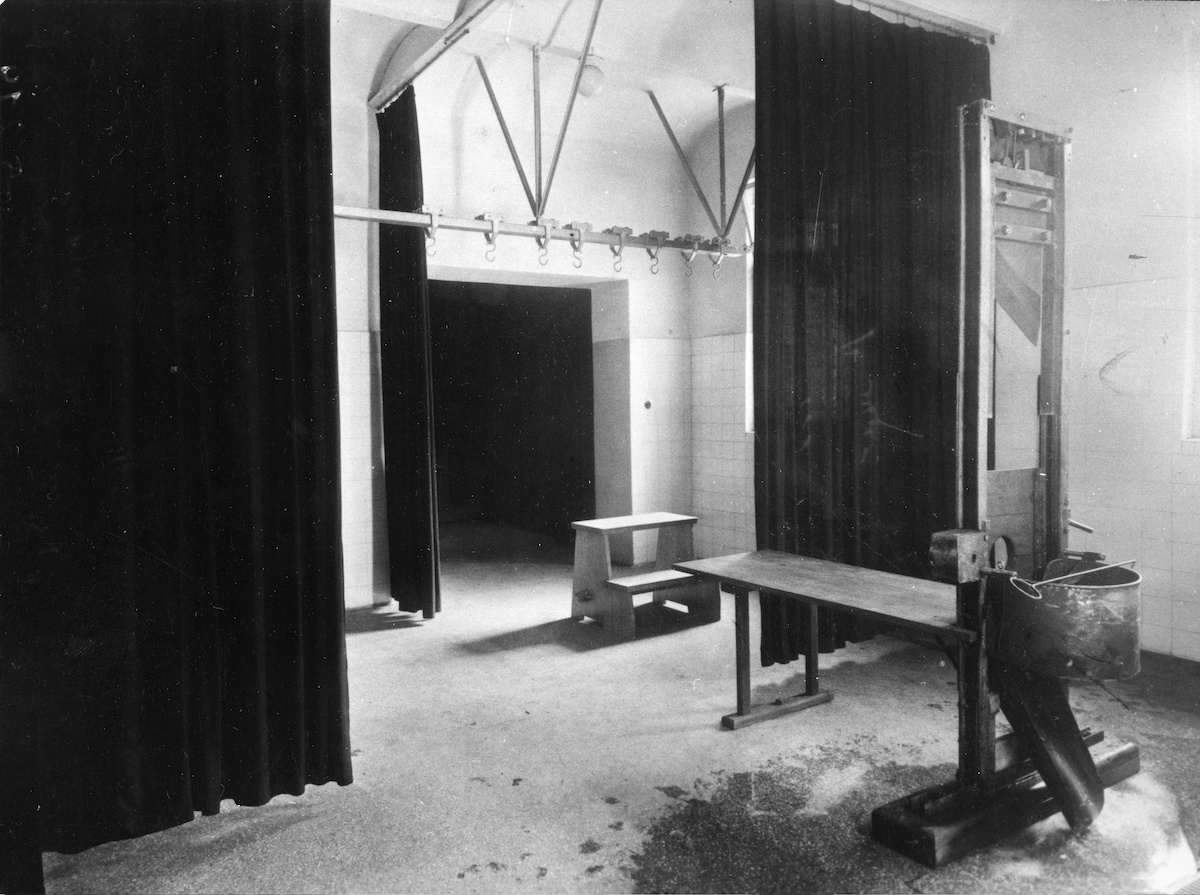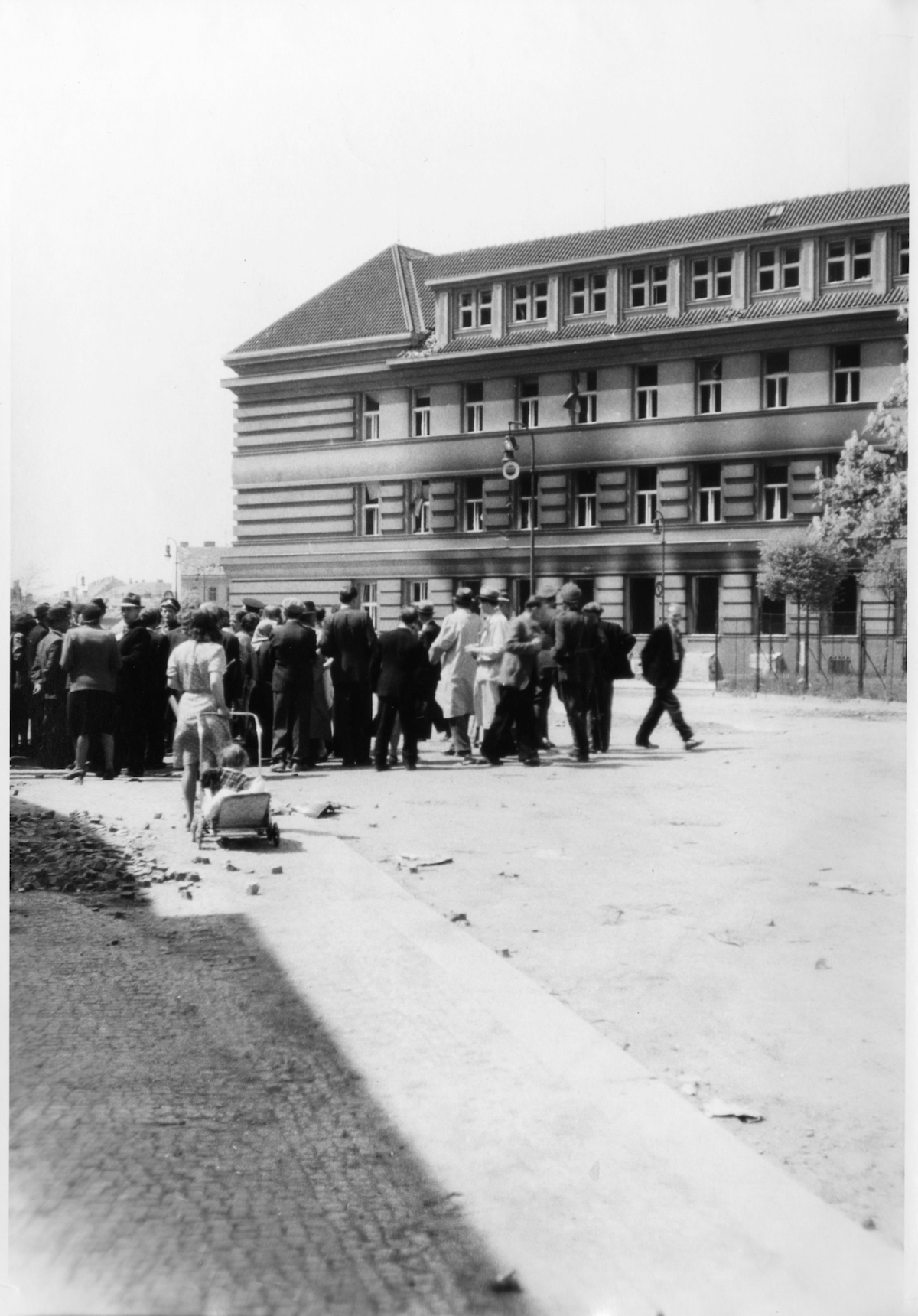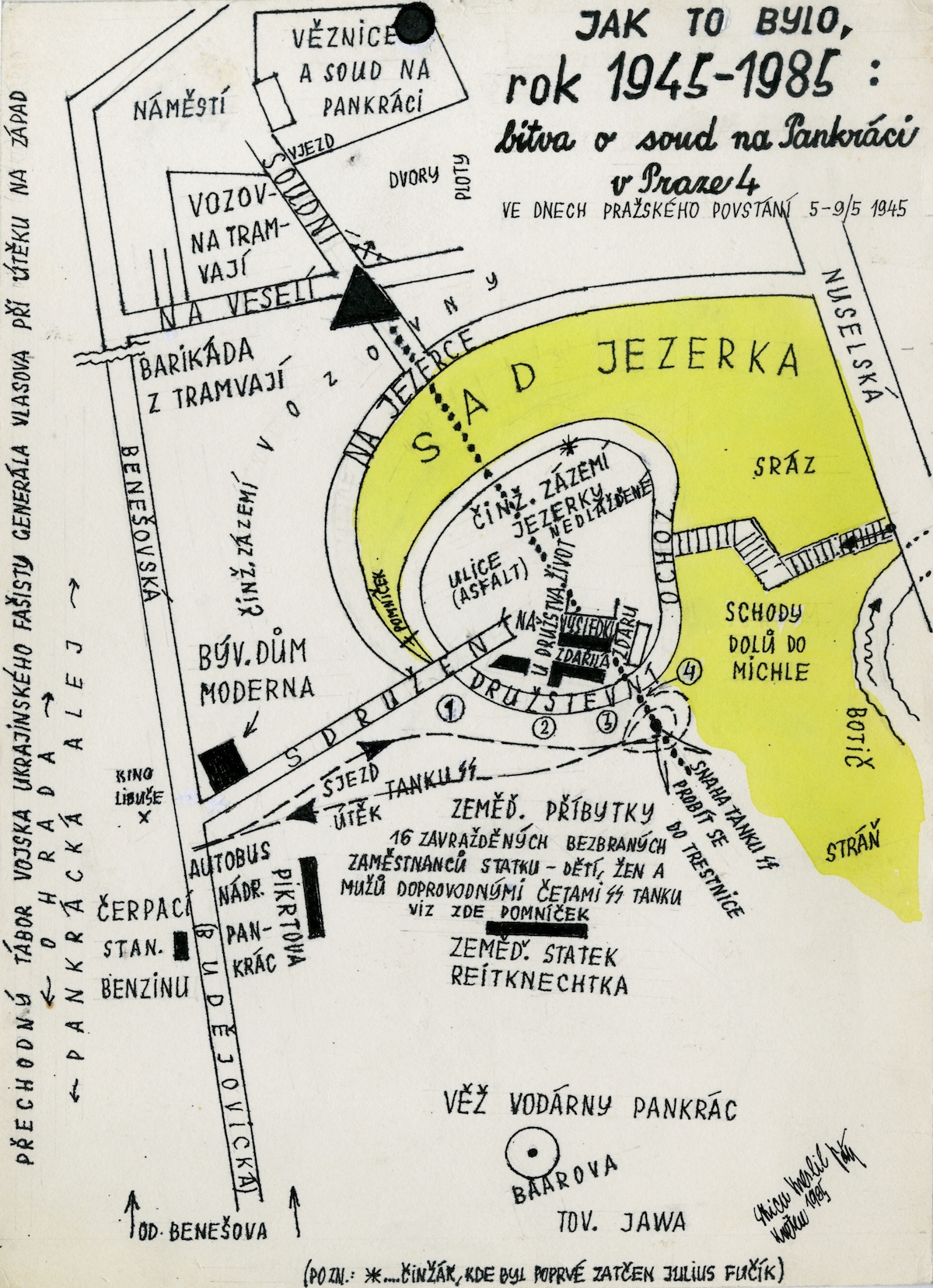- 1 Soudní Street, Prague 4 – Nusle
Pankrác Prison
Under the Protectorate of Bohemia and Moravia, Pankrác Prison became one of the instruments of oppression and physical liquidation not only of opponents of the Nazi regime but also of people convicted of ‘economic offences’, which included, for example, transporting food from villages to towns. Between 1939 and 1945, thousands of prisoners were detained there before being executed or sent to another prison or concentration camp.
Based on a decree of the Reich Minister of Justice from 15 April 1943, a separate place for the execution of the death penalty by decapitation was established in the women’s penitentiary II A. It became known as the infamous ‘axing room’, named after an axe that is part of the guillotine. The Nazis decided to establish an execution room in Prague to kill the opponents of the regime faster and in larger numbers. In addition to beheading, Pankrác prisoners were also hanged. This penalty was executed on Czech and Moravian Jews who, in the Nazi view, did not deserve the guillotine. Between 15 April 1943 and 26 April 1945, more than 1,075 individuals died under the guillotine.
On 5 May, around 2 pm, Pankrác Prison was taken over by insurgents. During the later German air raid, about 3,000 prisoners were released, including 50 individuals sentenced to death.
After the last execution, the guards tried to cover their tracks, burning the wooden components of the guillotine and throwing the dismantled metal parts into the Vltava from Charles Bridge. After the war, the guillotine was fished out and later reinstalled as part of the newly opened Anti-Fascist Resistance Memorial.

Situation plan of the battle for the Pankrác Court, May 1945. Museum of Prague.

Releasing prisoners from the Pankrác Prison in Nusle, May 1945, Museum of Prague, František Podobský.

The ‘Axing Room’ execution cell at the Pankrác Prison, photo dated 1945. Museum of Prague, unknown photographer.



